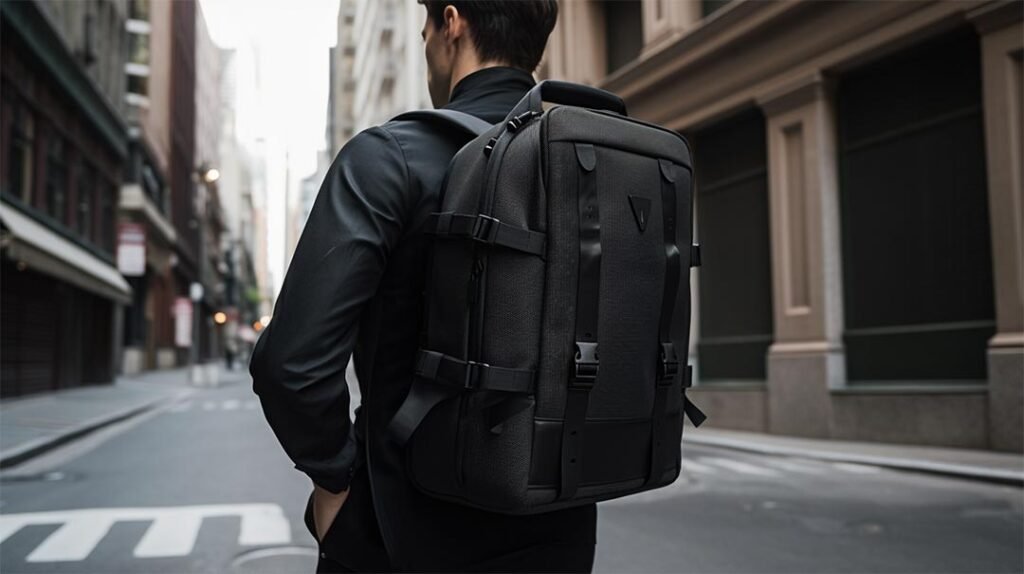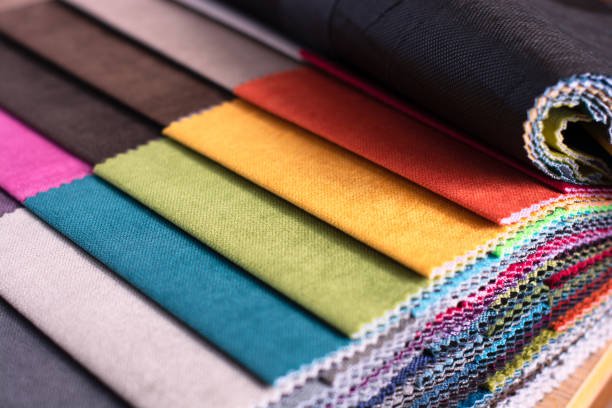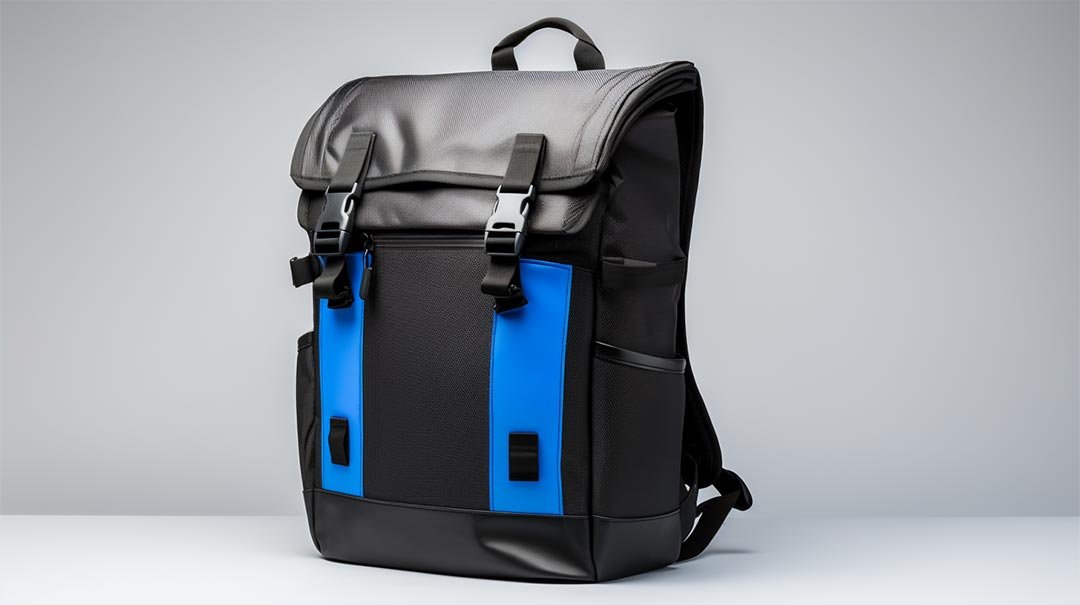Have you ever wondered about the fabric used in your favorite backpack, or what makes some outdoor gear so durable yet lightweight? The secret might just lie in the material known as 600D polyester. This fabric has been a game-changer in various industries, offering a perfect blend of durability and versatility.
600D polyester fabric is a heavyweight polyester known for its strength, durability, and resistance to tearing. It’s denoted by the ‘D’ which stands for denier, a measurement that indicates the thickness of the fabric’s fibers. This makes it an ideal choice for items that require a robust material, such as outdoor gear, backpacks, and heavy-duty clothing.

Understanding Polyester
The Basics of Polyester
Polyester is a synthetic fabric that’s celebrated for its resilience and ability to mimic natural fabrics. It’s made through a chemical reaction involving coal, petroleum, air, and water. This versatile material has woven its way into a wide range of products due to its unique set of advantages.
Advantages of Polyester Fabrics
Polyester is known for its exceptional strength, resilience to shrinking and stretching, and its quick-drying properties. These characteristics make it a staple in both the fashion and manufacturing sectors.
Diving Into 600D Polyester
What Does 600D Mean?
The ‘600D’ in 600D polyester refers to the denier, or density, of the fibers used in the fabric. The higher the denier, the thicker and more durable the fabric. This density makes 600D polyester an excellent choice for heavy-duty applications.
Characteristics of 600D Polyester
600D polyester boasts high durability, water resistance, and a significant degree of thickness, making it ideal for outdoor and rugged uses. It’s also relatively easy to dye, allowing for a variety of colors and patterns.
Common Uses of 600D Polyester
This fabric’s robust nature makes it perfect for backpacks, outdoor furniture covers, heavy-duty bags, and protective clothing. Its versatility also extends to the automotive and marine industries for seat covers and other durable items.
Comparison With Other Fabrics
600D Polyester vs. Other Polyester Varieties
While polyester comes in various densities, 600D is on the heavier side, offering more durability than its lighter counterparts. This makes it more suitable for products that require a higher degree of wear and tear resistance.
600D Polyester vs. Cotton
Compared to cotton, 600D polyester is more water-resistant and durable, though cotton may offer more breathability. The choice between the two often depends on the intended use of the fabric.
600D Polyester vs. Nylon
Nylon is another strong, synthetic fabric. While 600D polyester is praised for its durability and water resistance, nylon is typically more lightweight and offers a different texture and feel.
Care and Maintenance
Caring for 600D Polyester
Maintaining 600D polyester is relatively straightforward. It can usually be cleaned with soap and water, and most stains can be removed without the need for harsh chemicals.
Durability and Wear
One of the most appealing aspects of 600D polyester is its longevity. With proper care, products made from this material can last for years without showing significant signs of wear.
Sustainability and Environmental Impact
The Environmental Aspect of 600D Polyester
While polyester is not a natural fabric, there are growing efforts in the textile industry to recycle and reduce the environmental impact of synthetic materials like 600D polyester.
Recycling and Sustainability Efforts
The recycling of polyester fabrics, including 600D, is on the rise. This involves breaking down used polyester into fibers that can be reused to create new products, helping to reduce waste and conserve resources.
Choosing the Right Polyester Fabric
How to Choose High-Quality 600D Polyester
When selecting 600D polyester, look for indicators of quality, such as fabric weight, finish, and the reputation of the manufacturer. High-quality 600D polyester should feel sturdy and have a consistent color and texture.
Tips for Buyers
Consider the intended use of the fabric, as this will guide you towards the best type of 600D polyester for your needs. Also, don’t hesitate to ask suppliers about the fabric’s source and any sustainable practices involved in its production.

What are the advantages of using 600d polyester fabric for backpacks?
Durability and Strength:
One of the primary advantages of 600D polyester is its durability. The fabric is designed to withstand considerable wear and tear, making it ideal for backpacks that are used daily and subjected to various environmental conditions. Its strength ensures that the backpack can carry heavy loads without tearing.
Water Resistance:
600D polyester is inherently water-resistant, which means backpacks made from this material can protect the contents against light to moderate rain showers. While not entirely waterproof without additional coatings, its natural resistance to water is sufficient for most everyday needs, safeguarding electronics and other sensitive items from moisture.
Lightweight:
Despite its durability and resistance to water, 600D polyester is relatively lightweight. This is a critical factor for backpacks, as it helps minimize the overall weight being carried. A lighter backpack reduces strain on the back and shoulders, making it more comfortable to carry for extended periods.
Cost-Effective:
Compared to other high-strength fabrics like some nylons or specialty materials, 600D polyester is cost-effective. This affordability makes it an excellent choice for both budget-friendly and premium backpack brands, allowing them to offer durable products without a significant increase in price.
Ease of Maintenance:
Backpacks made from 600D polyester are easy to clean and maintain. The fabric’s structure allows for dirt and stains to be removed with minimal effort, usually requiring just a simple wipe-down with a damp cloth or a mild cleaning solution. This easy care extends the backpack’s lifespan, ensuring it looks good and functions well over time.
Versatility in Design and Color:
600D polyester takes well to dyes and prints, allowing for a wide range of color options and designs. This versatility enables brands to create backpacks in various styles, catering to different tastes and preferences. Whether for school, work, or outdoor activities, there’s likely a 600D polyester backpack that meets any aesthetic requirement.
Environmental Considerations:
With the growing focus on sustainability, 600D polyester offers advantages due to its potential for recycling. As the textile industry advances in recycling technologies, the environmental impact of producing 600D polyester backpacks can be mitigated, making it a more sustainable choice for eco-conscious consumers.
Resistance to Wrinkling and Shrinking:
Backpacks made from 600D polyester maintain their shape and appearance over time, as the material is resistant to wrinkling and shrinking. This resilience ensures that the backpack remains functional and aesthetically pleasing even with regular use.

450d nylon vs 600d polyester
Durability and Strength
- 450D Nylon: Nylon, in general, is known for its excellent strength and abrasion resistance. A 450 denier nylon fabric provides a good balance between durability and lightweight properties. It’s less prone to tearing and can withstand rugged use, making it suitable for high-end backpacks and outdoor gear.
- 600D Polyester: While polyester is inherently strong, the 600D variant is particularly known for its durability and resistance to wear and tear. It’s tough and can handle significant stress, although it may not be as abrasion-resistant as nylon of a similar denier.
Weight
- 450D Nylon: Nylon fabrics are typically lighter than polyester of the same denier. Therefore, 450D nylon is quite lightweight, contributing to the overall comfort and portability of the gear.
- 600D Polyester: Although 600D polyester is considered heavy-duty, it’s still relatively lightweight. However, it might be slightly heavier than 450D nylon, potentially adding a bit more weight to the end product.
Water Resistance
- 450D Nylon: Nylon is naturally water-resistant and can be further treated to enhance its waterproofing capabilities. However, it tends to absorb more moisture than polyester, which can make it feel heavier when wet.
- 600D Polyester: Polyester is also water-resistant and tends to repel water better than nylon, making it quicker to dry. This characteristic can be particularly beneficial in outdoor and wet environments.
Texture and Appearance
- 450D Nylon: Nylon fabrics generally have a softer feel and can offer a slightly shinier appearance. This can be desirable in consumer products where texture and aesthetics are important.
- 600D Polyester: Polyester has a more rugged texture compared to nylon. It holds color well, offering vibrant and long-lasting hues, which is advantageous for products that come in various colors.
Environmental Impact
- 450D Nylon: Nylon production is more energy-intensive and can have a greater environmental impact compared to polyester. However, advances in recycling processes are helping to mitigate these effects.
- 600D Polyester: Polyester is easier to recycle than nylon, and there’s a growing market for recycled polyester. This makes 600D polyester a more eco-friendly option for those concerned about environmental sustainability.
Cost
- 450D Nylon: Generally, nylon is more expensive to produce than polyester, making products made from 450D nylon typically costlier.
- 600D Polyester: Polyester is more cost-effective, offering a durable material choice at a lower price point.
-1024x691.jpg)
What is the difference between 600d and 1000d backpacks?
The difference between 600D and 1000D backpacks boils down to fabric density, durability, weight, and intended use:
- Durability: 1000D is thicker and stronger, making it more durable and suitable for harsh conditions, while 600D is sufficient for everyday use.
- Weight: 1000D fabric is heavier, which could be a drawback for those needing lightweight gear.
- Flexibility: 600D tends to be more flexible and has a smoother texture compared to the coarser 1000D.
- Use Cases: 600D is great for general use, like school or light outdoor activities. 1000D is better for demanding environments, such as military or adventure sports.
- Cost: Due to its higher durability and material costs, 1000D backpacks are typically more expensive than 600D ones.
Conclusion
Choosing between 450D nylon and 600D polyester depends on the specific requirements of the product and the preferences of the end-user. If you prioritize lightweight and abrasion resistance, 450D nylon might be the better choice. However, if you’re looking for a more cost-effective, durable, and water-resistant option, 600D polyester could be more suitable. Both materials have their place in the market, and the decision should be based on the application, budget, and desired product characteristics.







